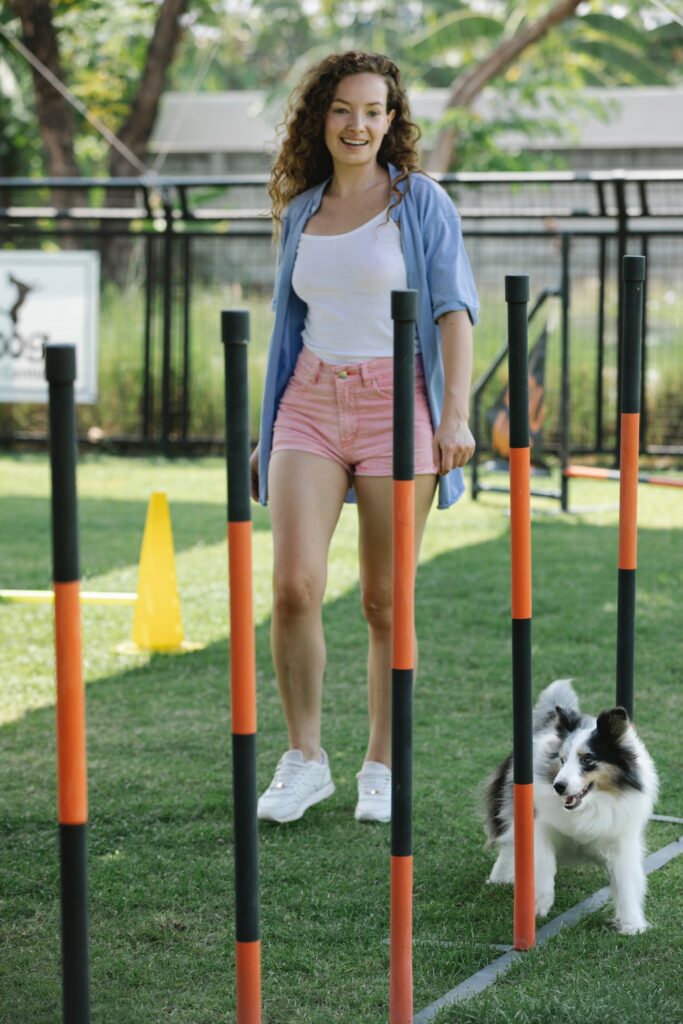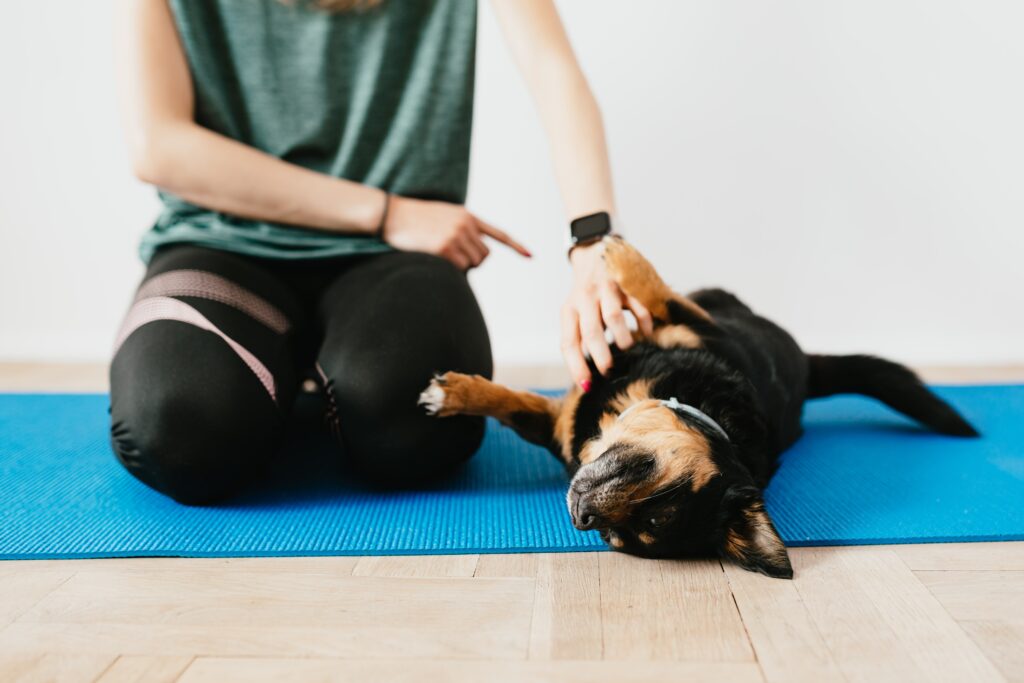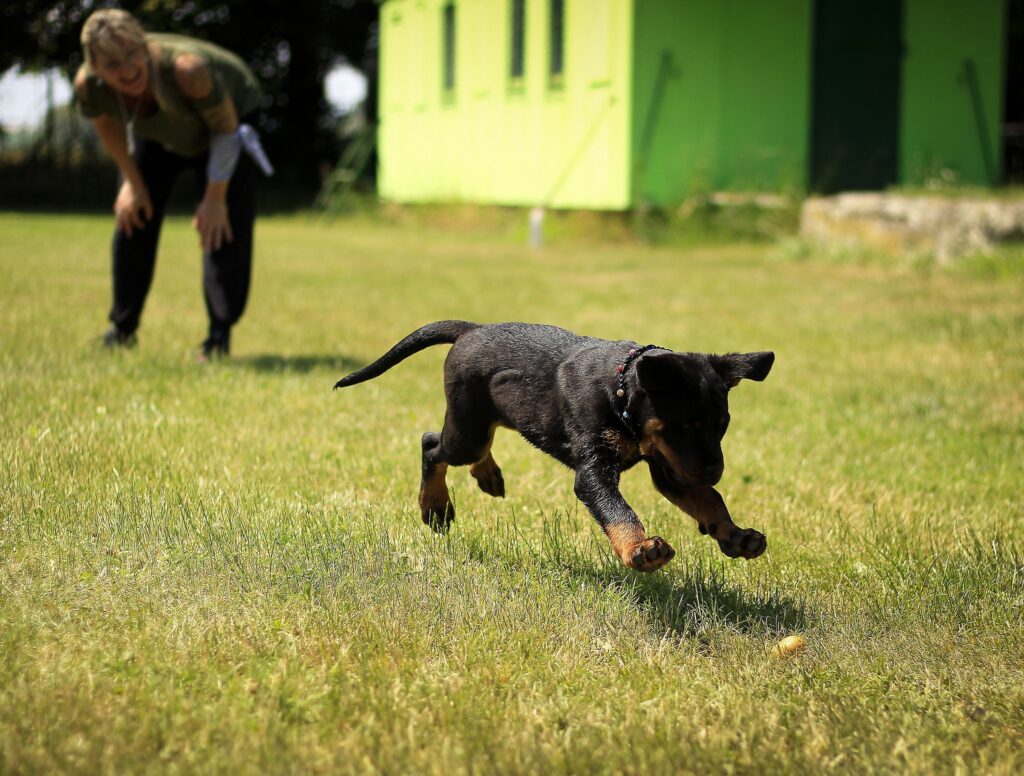Train Your Dog Like a Pro: Tips and Techniques for Success is an essential guide for dog owners who want to train their beloved pets in a humane, effective and efficient manner. This book provides detailed instructions and step-by-step instructions on how to properly train your dog in a number of important areas, including basic obedience commands, housebreaking, crate training, socialization and problem solving. This comprehensive guide covers a wide range of traditional and modern training methods, giving you the tools and knowledge you need to get your dog to behave the way you want it to. With this book in hand, you can be sure that you and your dog will enjoy a strong and healthy relationship for years to come.
Introduction to Training Your Dog: Types of Training and Goals
Dogs are intelligent, loyal, and loving animals that make wonderful companions. Training is an essential part of parenting a canine, as it helps to ensure that your pet is safe, well-behaved, and a pleasant member of your family. By teaching your dog basic obedience and providing them with the opportunity to learn and grow, you can create a strong bond with your pet and ensure that your pup is a well-rounded member of the household.
When it comes to training your dog, there are various types of training available to meet your pup’s individual needs. The most common types of training include basic obedience, house training, agility, and behavioral training.
The fundamental basis of educating any dog is through basic obedience training. Through basic obedience training, you can teach your pup commands such as “sit,” “come,” and “down.” Once your dog has mastered these commands, you can move on to more complicated exercises, such as teaching your pup to walk on a leash and stay in a designated area.
House training is another important element of training your dog. This type of training helps to ensure that your pup is able to recognize the appropriate place to eliminate and that they are able to hold their bladder and bowels until they are let outside. House training can be accomplished by providing your pup with a designated area to go to the bathroom, scheduling regular potty breaks, and rewarding your pup for going in the correct spot.
Agility training is a great way to give your pup a physical and mental workout. Agility training involves teaching your dog to navigate an obstacle course of jumps, hurdles, tunnels, and other obstacles. This type of training helps to build your pup’s confidence, while also providing them with an opportunity to work on their coordination and problem-solving skills.
Finally, behavioral training is an important part of teaching your pup to become a well-mannered member of the family. This type of training focuses on teaching your pup proper behavior with humans, other animals, and their environment. Behavioral training can help to prevent destructive behaviors, such as chewing and barking, as well as other forms of misbehavior.
No matter what type of training you choose for your pup, the goal should always be to create a positive relationship between you and your pet. Through consistency and patience, you can create a strong bond with your pup, while also providing them with the opportunity to learn and grow. With the right training program, you can ensure that your pup is a well-mannered and enjoyable member of your household.

Establishing a Positive Training Environment: How to Create the Perfect Training Space
Creating a positive training environment is essential for the successful delivery of training and development programs. A positive training environment is one where everyone feels comfortable, supported, and engaged. The space, design, and layout of the training environment all play an important role in fostering a positive atmosphere.
When designing a training space, it’s important to consider the physical environment and layout, as well as the training materials, equipment, and course content. Here are some tips for creating the perfect training space:
- Choose the right location. A good training space should be located in an accessible area that is free from distractions. It should also have enough room to accommodate the number of trainees and have adequate lighting, ventilation, and temperature control.
- Make the space comfortable. Provide comfortable chairs and tables to ensure that trainees can concentrate on the training material. Make sure there is adequate space between tables and chairs to allow for movement and discussion.
- Provide adequate materials. Make sure the room is stocked with all of the necessary materials and equipment that the trainees need to complete the training. This includes any visual or audio aids, printed materials, and supplies for activities.
- Utilize technology. Where possible, incorporate technology into the training space to engage the trainees and make the training session more interactive. This could include using video conferencing, online learning tools, or digital whiteboards.
- Encourage collaboration. Arrange the seating in a way that encourages collaboration between trainees. This could include round tables, or seating in rows facing each other.
Creating the perfect training space is essential for providing an engaging and successful training session. By following these tips, you can ensure that trainees feel comfortable, inspired, and engaged in the learning process.
Understanding Your Dog’s Behavior and How to Respond: Crafting the Perfect Training Plan
Creating the perfect dog training plan can be a challenge. It requires understanding your dog’s behaviors and knowing how to respond properly. To help you craft the best plan for your pup, here are some key tips to keep in mind.
First, get to know your dog. Observe their behavior in different settings and situations, and look for patterns. Pay attention to their body language, vocalizations, and other clues to see how they react to different stimuli. Take notes so you can make an informed decision when setting up a training plan.
Second, make sure to use positive reinforcement. Reward your pup with treats and praises when they exhibit desirable behaviors. Avoid punishing them for negative behavior. Instead, redirect their attention and provide them with alternative solutions.
Third, be consistent. Make sure to practice the same commands and techniques on a regular basis. This will help your pup learn faster and make training much easier in the long run.
Fourth, adjust your training plan as needed. If your pup is having difficulty understanding a particular command or technique, try adjusting the plan and make it simpler. You can also break down complex tasks into smaller components that are easier for your pup to understand.
Finally, be patient. Training your pup can take time and dedication. Show your pup that you’re there for them and give them plenty of love and affection. With the right approach and plenty of patience, you’ll be able to craft the perfect training plan for your pup.

Positive Reinforcement: The Basics of Rewarding Good Behavior
Positive reinforcement is a powerful tool that can help shape behavior, encourage learning, and foster positive relationships. It involves rewarding desirable behavior in order to encourage more of the same behavior in the future. While it may seem obvious, positive reinforcement can be an effective and efficient way to help manage behavior and promote pro-social behavior.
Positive reinforcement works by providing a reward following a behavior. The reward should be immediate and may be tangible (e.g., a sticker or a treat) or intangible (e.g., verbal praise or recognition). The goal is to pair the reward with the desired behavior, which will eventually lead to the desired behavior being repeated more often.
When deciding what type of reward to use, it is important to consider the individual’s preferences. Each person is different and may respond better to certain rewards than others. For example, a child who loves stickers may respond better to a sticker reward than a verbal praise reward. It is also important to consider the impact of the reward on the individual’s long-term behavior. For example, a reward of a toy might be effective in the short-term, but it might also encourage an individual to expect a reward in exchange for good behavior.
Providing rewards consistently and in a timely manner is crucial for positive reinforcement to be effective. The reward should be delivered immediately after the behavior in order to link the reward with the behavior. Additionally, it is important to be consistent in the type of reward provided and in the amount of reward.
Positive reinforcement is a simple and effective way to shape behavior, encourage learning, and foster positive relationships. By rewarding desirable behavior, individuals can learn to associate desirable behaviors with positive outcomes and be more likely to repeat them in the future.

Troubleshooting Common Training Issues: Dealing with Anxiety, Aggression, and Other Difficult Behaviors
Training issues can be difficult to manage, especially when they involve anxiety, aggression, or other difficult behaviors. It is important to understand the underlying causes and triggers of these behaviors in order to develop effective solutions. This article will provide an overview of common training issues, as well as some strategies for dealing with them.
Anxiety: Anxiety is a normal response to unfamiliar situations and can be a source of stress for both the trainer and the animal. To reduce anxiety, it is important to recognize the signs and provide the animal with a safe and secure environment. Slow, gradual introductions to new stimuli and practice of relaxation techniques can help an animal become more comfortable and confident.
Aggression: Aggression is a normal response to perceived threats, and can be triggered by fear or discomfort. It is important to identify what is triggering the aggression in order to provide an effective solution. Teaching an animal to recognize and respond to cues such as “watch me” or “leave it” can help redirect the animal’s attention away from the source of the aggression. Additionally, providing positive reinforcement for desired behaviors and redirecting the animal to more desirable activities can help reduce aggressive behaviors.
Other Difficult Behaviors: Other difficult behaviors can include fear, escape attempts, excessive vocalization, and destructiveness. It is important to identify the underlying cause of these behaviors in order to provide an effective solution. For example, a fear of loud noises may require desensitization training, while escape attempts may require more secure fencing or confinement.
In conclusion, managing training issues can be challenging, but with the right strategies and understanding of the underlying causes, it is possible to help an animal become more comfortable and confident. It is important to recognize the signs of anxiety, aggression, and other difficult behaviors, and to develop solutions that are tailored to the individual’s needs.
Conclusion
Train Your Dog Like a Pro: Tips and Techniques for Success is an important resource for anyone who is looking to properly train their dog. The book provides helpful tips and techniques that can be used to shape the behavior of a dog and help them become a well-trained pet. With its easy-to-follow instructions and comprehensive advice, it is an invaluable resource for all pet owners who want to train their dog the right way and ensure a long and happy relationship with their pet.




